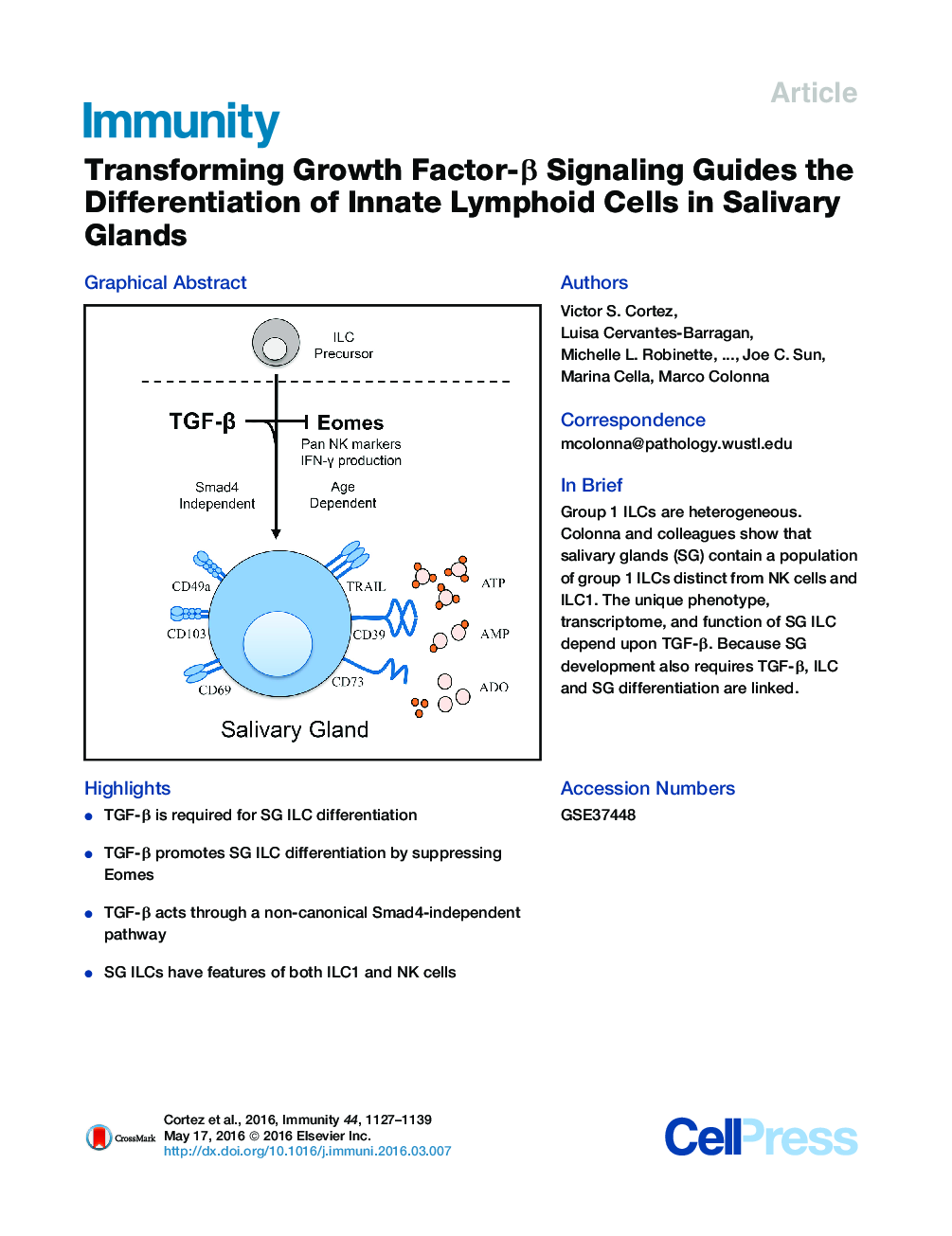| Article ID | Journal | Published Year | Pages | File Type |
|---|---|---|---|---|
| 3352881 | Immunity | 2016 | 13 Pages |
•TGF-β is required for SG ILC differentiation•TGF-β promotes SG ILC differentiation by suppressing Eomes•TGF-β acts through a non-canonical Smad4-independent pathway•SG ILCs have features of both ILC1 and NK cells
SummaryThe signals guiding differentiation of innate lymphoid cells (ILCs) within tissues are not well understood. Salivary gland (SG) ILCs as well as liver and intestinal intraepithelial ILC1 have markers that denote tissue residency and transforming growth factor-β (TGF-β) imprinting. We deleted Tgfbr2 in cells expressing the ILC and NK marker NKp46 and found that SG ILCs were reduced in number. They lost distinct tissue markers, such as CD49a, and the effector molecules TRAIL and CD73. Expression of the transcription factor Eomes, which promotes NK cell differentiation, was elevated. Conversely, Eomes deletion in NKp46+ cells enhanced TGF-β-imprinting of SG ILCs. Thus, TGF-β induces SG ILC differentiation by suppressing Eomes. TGF-β acted through a JNK-dependent, Smad4-independent pathway. Transcriptome analysis demonstrated that SG ILCs had characteristic of both NK cells and ILC1. Finally, TGF-β imprinting of SG ILCs was synchronized with SG development, highlighting the impact of tissue microenvironment on ILC development.
Graphical AbstractFigure optionsDownload full-size imageDownload high-quality image (132 K)Download as PowerPoint slide
